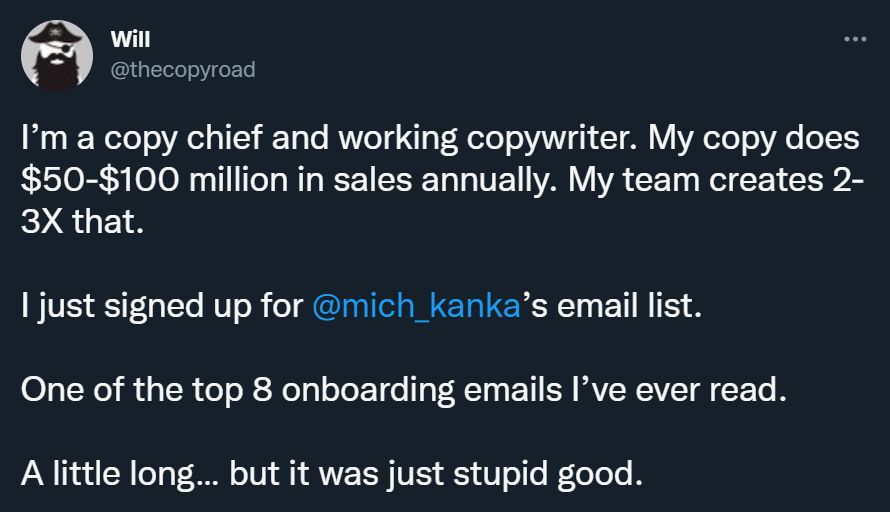
What was Tim Ferriss' “The 4-Hour Workweek” marketing strategy – low-budget marketing that led to 2.1M book copies sold (9 min read)
The 4-Hour Workweek – a bestseller book by Tim Ferris that explores the ways to create a lifestyle business that works on autopilot, so you can enjoy life more. It’s based on the author’s experience and concepts and leaving the life of workaholic. Sold in 2.1 million copies, stayed for 4 years on The New York Times Best Seller List, and translated into 40 languages.

The 4-Hour Workweek Hstory Timeline
- Pre-2007 – The 4-Hour Workweek got turned down by 26 publishers. In 2006, Tim Ferris tested the title with Google AdWords.
- Mar 14-18 – SXSW 2007 in Austin, TX. Tim Ferris networks and sends personalized review copies of the book.
- Apr 15-18, 2008 – Web 2.0 Expo in San Francisco, CA. Ferris builds buzz on another conference.
- Apr 24, 2007 – the first release. The book starts from No. 123 on Amazon thanks to presales.
- Jun 4, 2007 – the book is already No. 8 on Amazon
- Beyond – The 4-Hour Work Week has been named a bestseller already in 2007. It stayed on the New York Times Best Seller List until 2011.
Tim shared most of his tactics for releasing 4HWW on #99 episode of his podcast
“The 4-Hour Workweek” development – finding key audience
Tim Ferriss started to work on his ideas regarding the book while working 14 hours a day in his sports nutrition company. He then embarked on a trip to Europe, when he realized that he work differently, and have more time for himself. This is what “The 4-Hour Workweek” development process looked like – Tim fought his own workaholics.
Tim Ferris’ approach to “The 4-Hour Workweek” development was to start with a limited market. He didn’t try to attract all possible types of readers, rather than such a specific group as 20-40 years old, tech-savvy males, living near the coasts - in New York and San Francisco.
The strategy was to build buzz in that exact audience and expect they would market the book to their friends and networks.
Tim Ferriss “The 4-Hour Workweek” marketing strategy: reaching the target through influences
Step two was to find where does the audience spend time online, what were the top 5-10 websites for them and what were the influencers they followed.
Tim Ferriss “The 4-Hour Workweek” marketing strategy: reaching out to influencers
Once the top influencers had been identified, Tim Ferris looked for the least crowded way of approaching them. In this case, that were the conferences, SXSW and Web 2.0 Expo in particular.
Laid-back networking
Ferris approached networking at SXSW as looking for long-term relationships. He didn’t try to oversell, pitch too much, or anything like that. Instead, he was just communicating that he’s there for the first time, with his book, and more of the small-talk.
Instead of reaching out straight to the A-list panelists, he went for much less crowded moderators who often have impressive bios too. Every time, he could, Ferris left just as little info about his book as possible, but enough to build curiosity.
Another way of leaving a mark was to join a five-minute talk at the Web 2.0 Expo and jump into conversations with the interested audience straight after.
From this natural conversations, many people became interested in the book.
Personalized experience
During networking, Ferris managed to talk about the book with some influencer-attendees. If they were interested in any particular subject, he would send a review copy later with post-its on the parts that they discussed.
Such a personalized reading experience saved their time and maintained the connection. Many of those who received the book recommended it to their networks, for example Merlin Mann from „43 Folders” productivity blog, or Darren Rowse from ProBlogger.net.
Tailored content
Both at SXSW and Web 2.0 Expo, Tim made short appearances. He tailored what he said there exactly to his target audience in this exact space. That meant, he would talk about living a remote work life and telling stories from his life. Once he had built interest during such a talk, he’d get few interested listeners after the speech.
“The 4-Hour Workweek” development – warming up the audience
Notice that Tim Ferriss never jumped straight to the business. He first joined people that were already talking in a group, showed genuine interest, and told more about him and his project only when it came naturally, or he was asked for it. Then, he explained what the book was about. Then, he would ask if they want to get a review copy with some notes. Most of them said yes, because they were already interested in the book.
Why is “The 4-Hour Workweek” popular – copywriting
The book is written with a language tailored to the target audience. The title, The 4-Hour Workweek. Escape 9-5, Live Anywhere, and Join the New Rich, is self-explanatory and sells a dream of many.
The very title evoked the readers’ curiosity, and it gave them a “promise” to make their life more “enjoyable”, easier. Many fell to the book’s slogans.
Tim Ferriss “The 4-Hour Workweek” marketing strategy: market testing
Tim Ferris used Google AdWords to test several titles for the book before the launch, in 2006. The winning one was The 4-Hour Workweek. Escape 9-5, Live Anywhere, and Join the New Rich, but others tested were Broadband and White Sand, Drug Dealing for Fun and Profit, Millionaire Chameleon, and others.
Making it to the headlines
Once there was enough buzz about the book, and it made it to the top bestseller lists, it gained exposure to millions of people who couldn’t resist the title and checked what it’s about.
Tim Ferriss “The 4-Hour Workweek” marketing strategy: publisher marketing
The book’s publisher took care of all the offline marketing, although publishers usually do that to a limited extent, unless you are a best-selling author already. In this arrangement, Tim Ferris was supposed to do the digital marketing part.
When was “The 4-Hour Workweek” originally published?
Tim Ferriss “The 4-Hour Workweek” was originally published on April 24th, 2007. However, now it is available as an audiobook and for Kindle readers, too.


Social proof
The first sales worked based on recommendations – if we have a connection with the person recommending an item, we’re more likely to buy it. That worked for the first influencers and then for those who read the reviews.
Trustworthiness
We tend to avoid people that try to sell to us without any kind of relationship with us–if we don’t ask them for that. Ferris’ approach to networking ensured he appears as trustworthy and asked for anything after a relationship has been made.
Snowball effect
Reaching bestseller lists is the best way to make a book sell even more. Getting into Amazon’s top 10 early on was one of the keys to 4HWW’s success.

Events might sound abstract with pandemics, but they were long effective for establishing new partnerships and networking, which proved to be very effective in the case of “The 4-Hour Workweek” marketing strategy. It’s much harder nowadays, but you can still leverage Tim Ferris’ approach to selling online – find a niche within a niche, reach out to relevant influencers where they’ll hear you out, and watch the sales growing organically.
Get your
"oh sh*t, this might work for us!"
moment in the next 5 minutes
Viral marketing case studies and marketing psychology principles that made hundreds of millions in months or weeks
In the first email:
- a step-by-step strategy that made $0-$30M within 9 weeks with $0 marketing budget (case study)
- cheatsheet (PDF) of 10 biases in marketing used by top 2% companies
Other than that:
- weekly original content that helps you STAND OUT by providing more perceived value with less work

(You won't find it anywhere else)

Explore Cognitive Biases in Marketing